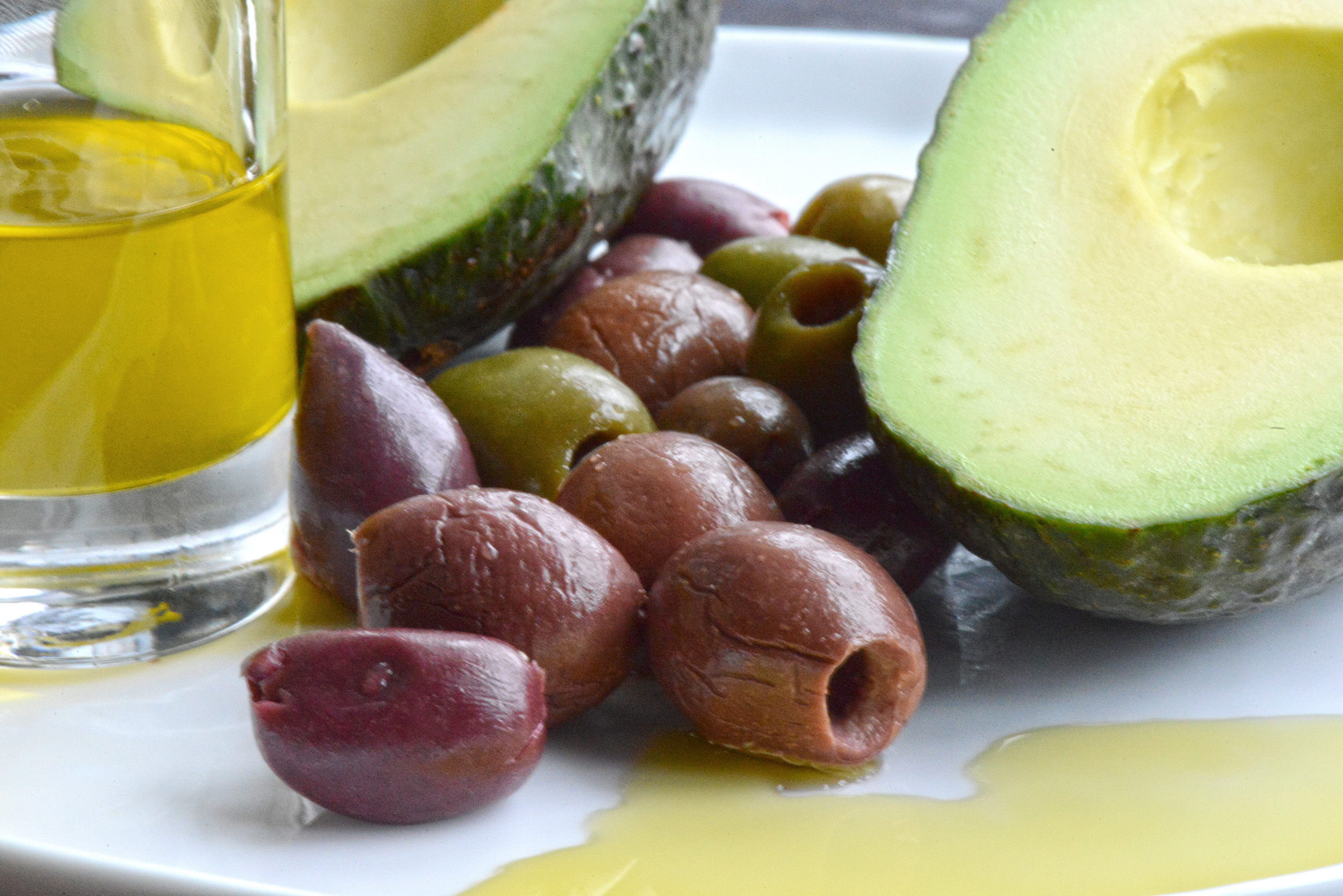Cholesterol and how it is related to Morbid Obesity and Bariatric Surgery
Cholesterol is a lipid, or type of fat produced by the liver and derived from various dietary sources. Although often referred to in negative terms, cholesterol plays an essential part in many processes within the body, including formation of cell membranes and nerve linings and in the manufacture of bile acids, fat-soluble vitamins and certain hormones. However, high cholesterol or hypercholesterolemia is strongly associated with significant health issues including heart disease and stroke.
Good Fats and Good Cholesterol

What are HDL and LDL Cholesterol?
Cholesterol is not fully soluble in water, so in order for it to be able to travel round the body within the blood stream it must be contained within another particle, known as a lipoprotein, with a water-soluble exterior surface. There are several different types of lipoprotein molecule, categorized in terms of density, each of which performs a different function within the body. In simple terms, low-density lipoprotein (LDL) transports cholesterol from the liver to cells in the body, whilst high density lipoprotein (HDL) returns cholesterol from the blood stream and arterial walls to the liver for disposal; a process known as “reverse” cholesterol transport.
Peripheral Vascular Disease

When present in greater quantities than required, LDL cholesterol can build up in patches known as plaques within artery walls, leading to narrowing of the arteries, or atherosclerosis. Over time, these atherosclerotic plaques can build up to the extent that blood flow to the heart, brain and other areas of the body becomes restricted. It is also possible for a plaque to rupture, causing a blood clot. Hence the presence of high levels of LDL cholesterol is a strong risk factor for conditions including heart attack, angina, peripheral vascular disease, stroke and transient ischemic attack (TIA or “mini-stroke”).
In contrast, higher levels of HDL cholesterol are associated with improved health outcomes, including reduced risk of heart disease and stroke. In addition to facilitating reverse cholesterol transport, HDL particles may also actively strip cholesterol from arterial plaques, slowing down the progress of atherosclerosis. Hence higher levels of “good” HDL cholesterol can protect against an unhealthy increase in “bad” LDL cholesterol. However, the conditions that lead to elevated levels of LDL cholesterol also tend to cause HDL cholesterol to decrease.
Lifestyle Factors that Contribute to Hypercholesterolemia
Diet and lifestyle are significant factors in many cases of hypercholesterolemia. In particular, a diet high in saturated and trans fats is strongly associated with elevated levels of LDL cholesterol, whilst consumption of foods high in dietary cholesterol such as eggs, prawns and liver has comparatively little impact upon circulating levels of cholesterol in the blood in most individuals. Sources of saturated fats include animal-derived products such as dairy produce, cheese, butter, cream, meat, chocolate, palm oil and coconut oil.
Trans fatty acids, or trans fats, also occur naturally in small quantities in beef and dairy products, but most dietary trans fats are industrially produced via a process known as hydrogenation, in which hydrogen is added to vegetable oil in order to make it more stable and better able to withstand reheating when used for frying or in baked goods. Usually described on food packaging as partially hydrogenated oil, the negative impact of trans fats upon cholesterol is greater than that of saturated fats as they raise LDL cholesterol and lower HDL cholesterol. Trans fats are also known to have inflammatory properties, contribute to insulin resistance and are associated with increased risk of heart disease, diabetes and stroke.
Some fat is essential to good health, and consumption of small quantities of monunsaturated fat from food sources such as olive and canola oil, avocados, sesame seeds and peanuts, and polyunsaturated fat from sources such as corn, flaxseed and sunflower oil, oily fish and walnuts has been shown to increase levels of HDL cholesterol.
Dietary fiber is the proportion of plant-based foods that cannot easily be broken down by gastrointestinal processes. It is classified as being soluble or insoluble, based upon its ability to dissolve in water, and most foods high in dietary fiber contain a mixture of the two. A high-fiber diet is generally considered beneficial to digestive health and also tends to be naturally lower in saturated fats, but more specifically, increased consumption of foods rich in soluble fiber has been found to have a lowering effect upon LDL cholesterol. Oats, beans, pulses, fruit and vegetables are good sources of soluble fiber.
Arteriogram

Smoking is a known risk factor for atherosclerosis due to its effect upon cholesterol. A chemical called acrolein, present in tobacco smoke and known to cause modification of various protein molecules, is thought to be responsible. When absorbed into the blood stream via the lungs, acrolein acts upon HDL cholesterol to reduce its ability to carry LDL cholesterol back to the liver for disposal. Additionally, acrolein triggers changes in LDL molecules that render them unrecognizable to the immune system. When these modified LDL molecules enter arterial walls the body reacts by sending white blood cells and other substances to the site, causing inflammation and increasing the rate of plaque build-up.
Those leading a sedentary lifestyle are at increased risk of hypercholesterolemia, with regular exercise known to have a beneficial effect upon cholesterol levels by lowering LDL and raising HDL cholesterol. The mechanism underlying this is not well understood, but it is thought that exercise may increase the efficiency of cholesterol transport to the liver, and may also reduce the rate at which cholesterol from dietary sources is absorbed into the blood stream. Exercise has also been found to increase the size of LDL and HDL particles, making it more difficult for the LDL particles to penetrate artery walls. Participating in regular exercise can help maintain a healthy body weight and is independently associated with reduced risk of stroke, diabetes and cardiovascular disease.
Cholesterol and the Effects of Obesity
Obesity has long been understood to impact directly upon lipid metabolism and a close correlation exists between BMI, elevated levels of LDL cholesterol and reduced levels of HDL cholesterol. Those with central or truncal obesity, where extra weight is distributed predominantly around the abdomen and upper body, are particularly susceptible to hypercholesterolemia. This pattern of fat distribution is associated with the presence of increased levels of visceral fat, which is thought to be more metabolically active than the subcutaneous fat predominant in non-truncal patterns of fat distribution.
Being obese is also a risk factor for conditions such as diabetes and hypertension, which are themselves associated with increased risk of hypercholesterolemia and atherosclerosis. Many obese individuals are known to lead sedentary lifestyles, and may find it particularly challenging to take part in regular exercise, further increasing their risk of developing hypercholesterolemia.
When truncal obesity, hypercholesterolemia, elevated blood glucose and/or hypertension occur concurrently, a diagnosis of metabolic syndrome, or syndrome X, may be made. Individuals with syndrome X are at increased risk of developing several serious conditions including diabetes, cardiovascular disease, stroke and some forms of cancer.
Bariatric Surgery and the Beneficial Effect upon Cholesterol Levels
Bariatric procedures have been found to have a beneficial effect upon cholesterol levels in obese individuals, with malabsorbtive procedures such as the Roux-en-Y gastric bypass (RYGB) delivering greatest reduction in levels of LDL cholesterol. Several studies have shown that RYGB surgery can lead to significant reductions in LDL cholesterol levels in morbidly obese individuals, with many of those exhibiting hypercholesterolemia prior to surgery achieving normal blood cholesterol levels within six months post-operatively without the need for ongoing use of cholesterol-lowering medication.
Additionally, bariatric surgery has been proven effective in preventing or reversing type 2 diabetes in a high proportion of morbidly obese individuals when compared to nonsurgical controls and is also known to have a positive impact upon hypertension. Restrictive procedures such as laparoscopic sleeve gastrectomy do not appear to lower LDL cholesterol to the same extent as malabsorbtive procedures, but are equally effective at raising HDL cholesterol levels and appear generally comparable in terms of lowering cardiovascular risk.
Other Health Conditions Affecting Cholesterol
Health conditions such as diabetes, polycystic ovarian syndrome, kidney disease, hypertension and thyroid problems are associated with increased risk of developing hypercholesterolemia through a variety of mechanisms. A number of genetic factors are also known to influence susceptibility to hypercholesterolemia. Familial Hypercholesterolemia is an inherited condition in which the LDL receptors responsible for removing LDL cholesterol from the blood stream are absent or do not function correctly, resulting in high levels of circulating LDL cholesterol.
Individuals with Familial Hypercholesterolemia are at greatly increased risk of developing cardiovascular disease early in life. The condition is detectable at birth and usually treated with cholesterol-lowering medications. In the absence of Familial Hypercholesterolemia, having a first degree relative with a history of early onset stroke or cardiovascular disease is also associated with an increased risk of hypercholesterolemia
Cholesterol levels generally increase with age, and whilst current data indicates no clear gender bias, men are statistically at greater risk of developing cardiovascular disease due to other factors, such that the negative health consequences of hypercholesterolemia may be greater in men. It is considered normal for pregnancy to trigger an increase in cholesterol production during the second and third trimesters, with levels typically reducing again within a few weeks of delivery.
Other Treatments to Manage Hypercholesterolemia
Dietary and lifestyle modifications are extremely important in preventing or managing hypercholesterolemia. In addition to taking regular exercise and stopping smoking, dietary changes such as cutting down on saturated and trans fats, eating a moderate amount of unsaturated fat and increasing soluble fiber intake may be all that is required to restore and maintain healthy cholesterol levels. However, if these changes do not have a significant impact after several months then cholesterol-lowering medication may be prescribed.
Statins are drugs that inhibit the enzyme responsible for cholesterol production within the liver. Various types of statins are available, each acting in slightly different ways and with the potential for a range of side effects, the most common of which are headache, nausea, digestive disturbances, and muscular pain, although more serious side effects are also possible. In particular statins confer an elevated risk of developing type 2 diabetes, particularly in individuals who are already at increased risk of developing diabetes due to factors such as obesity.
Typically, those who are prescribed statins will need to take them for life, as their cholesterol-lowering effect ceases when treatment is discontinued. However, significant weight loss, as facilitated by bariatric surgery, can sometimes enable previously obese individuals to safely stop taking statins.
Drugs that block absorption of dietary cholesterol are also available, but generally considered to be less effective than statins in managing hypercholesterolemia, so may only be prescribed where statins are contraindicated. For those at particularly high risk of stroke or cardiovascular disease, statins may also be combined with other medications.






